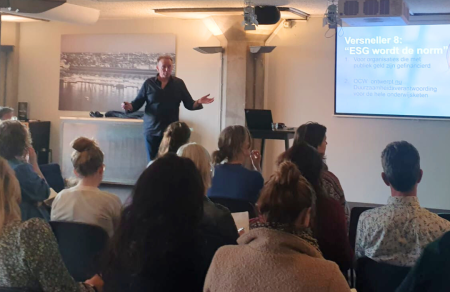General
The book describes a dozen walks, in very diverse landscapes and throughout the country: beach and dune, forest, heathland, stream valleys, meadows, ponds, city, hill country, marshland, farmland, river and salt marsh. And indeed: if you 'walk' along with the author, then you are confronted - at least I am - with the same state of mind as Dijksterhuis himself (I think): something between the systematic inventor ('Well, we can tick that one off'), the romantic ('What a beautiful bird') and the concerned nature conservationist ('Here again, the influence of industrialized agriculture'). And that is a variety in the book that ensures that these descriptions never get boring. Exactly the same feeling I have when reading Jac.P. Thijsse.
There are a few places where this style of writing can be criticized. In some paragraphs (p. 44, 48, 82, 92, 206) I see the word 'I' every time 6 times (as if he cares); idem elsewhere the word 'sheep' (p. 57/58). That's a bit much in a few lines.
Not a big deal, a little distracting in those places though. But oh ....
The walks
Already in the first story, about beach and dunes, I felt the spirit of Thijsse: direct observation in nature, in homely-imaginative language, after which Dijksterhuis also takes you along on 'side-paths' and adds depth to what he sees. Or elaborates on a thought that comes to him associatively. Or a humorous remark and observation: "Although goldcrests usually stay high in the canopy, I have often come face to face with them - and once one even sat on my head. I stood motionless and the bird must have mistaken me for a pole or tree stump".
The beauty of that 'homey' approach is that you see it all a bit before you - a bit as if you were already on the road yourself. Also, the constant changing of perspective (direct observation and then taking in thoughts about it) keeps you 'awake'. And yet.
Yet I miss something very important: illustrations. You could think - somewhat nostalgically - of the 'Verkade pictures' (with permission, of course). Or self-made photos, sketches or drawings so that the image becomes more lively and 'real'. The book itself is also, as far as I'm concerned, a bit 'bare', a bit boring.
This is not made up for by the very sketchy maps placed before each chapter. They should have been given a more detailed, cartographic basis because now they give too little information. Dijksterhuis writes in his introduction that he likes to put prescribed routes on his hiking boots (!) but it would have been handy if he had at least 'taken' the reader to an easily accessible starting point. That could really be better. Because that is also what the book leads to: the need to go out in those areas yourself!
All in all, a book that is well worth reading. You learn to see various landscapes from a completely different angle and hope that, when you go out yourself, you can also make so many observations. My only hope for a second edition is that it looks a bit more 'colorful'.








